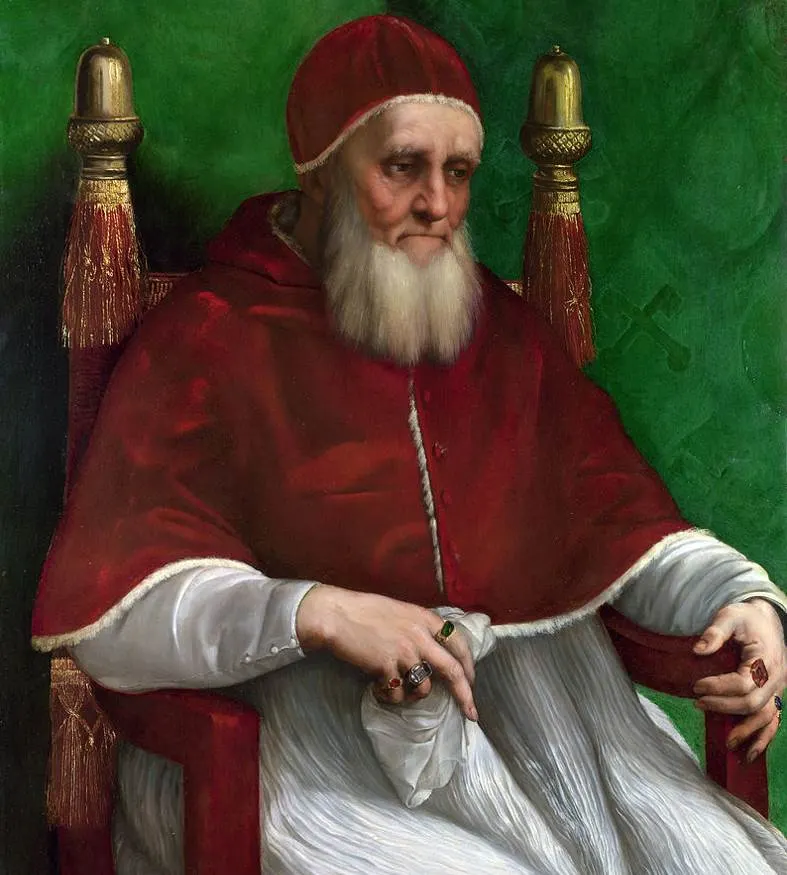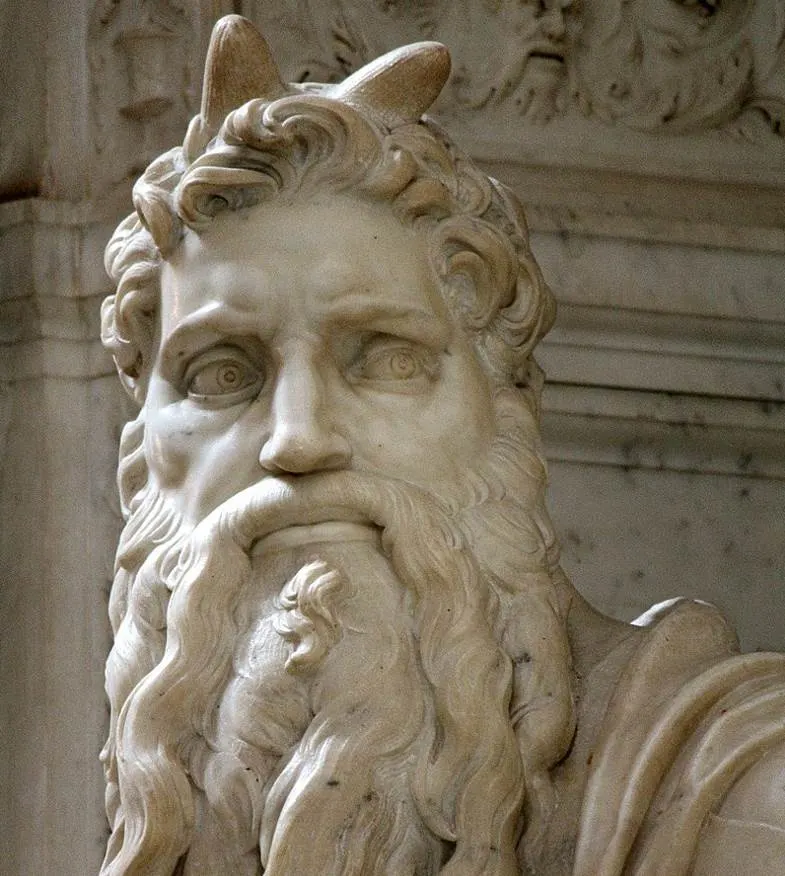When Michelangelo Buonarroti (1475-1564) was in his early twenties, he earned a commission from a French Cardinal.
The sculpture is now simply referred to as the Pietà (1498-1499) and became one of the greatest artworks in history. It’s still on display at St. Peter’s Basilica today and turned the Renaissance master into one of the greatest artists alive in the late 15th century.
He returned to Rome 6 years later to work for Pope Julius II (1443-1513), the great patron of the arts during the High Renaissance for whom he completed several amazing masterpieces.
In this article, we’ll take a closer at some of the most interesting facts about Moses by Michelangelo, a Renaissance sculpture that was commissioned for a particular reason.
1. It was commissioned by Pope Julius II for a special reason
This High Renaissance reached its peak period when Michelangelo, Raphael (1483-1520), and Leonardo da Vinci (1452-1519) all worked in Rome for Pope Julius II. Imagine having 3 of the greatest masters in history on your payroll.
That was the situation for Pope Julius II (of whom Raphael produced a remarkable portrait), a man who surely loved fine art and who commissioned multiple masterpieces during this brief period in history.
The Pope invited the young artist (Michelangelo was barely in his thirties) back to Rome in 1505 and commissioned him to build his very own tomb. This was to become a monumental work of art.

2. Michelangelo didn’t complete the work until after the Pope passed away
Pope Julius II ordered Michelangelo to complete his tomb in just 5 years, an incredible deadline that would have been very hard to meet. On top of that, he commissioned a wide variety of other works from the artist as well, including the fresco inside the Sistine Chapel.
This was a remarkable commission because Michelangelo was mainly a sculptor. It took him 4 long years to complete this incredible work of art between 1508 and 1512 which includes “The Creation of Adam,” one of the most iconic artworks ever produced.

This was also a time in which the Pope was running low on cash because he had commissioned Donato Bramante (1444-1514) to design the new version of St. Peter’s Basilica.
Michelangelo eventually started working on Moses shortly after Pope Julius II passed away in 1513, completing the sculpture in 1515.

3. The artist was way too ambitious with the initial plan for the tomb
The deadline of 5 years was simply impossible to meet, especially because Michelangelo initially presented a plan that features 40 different sculptures.
The monumental sculpture of Moses was intended to become the centerpiece of this immense tomb and was to be placed at an elevation of 3.74 meters (12 feet 3 inches) above the ground.
The tomb was seriously reduced in dimensions following the Pope’s death and was to become a relatively simple wall tomb. Michelangelo eventually completed the final sculptures of it between 1542 and 1545.

4. The Pope was never buried inside the tomb
Although it’s referred to as the Tomb of Julius II? it’s nothing more than a funerary monument. That’s because Pope Julius II isn’t buried here but rather next to his uncle, Pope Sixtus IV, at St. Peters Basilica.
The project, which was completed between 1505 and 1545, never satisfied Michelangelo because he had way bigger plans for it initially.
He completed Moses but it’s assumed that the statues of Leah and Rachel next to the main figure were mostly completed by the artist’s workshop. The statues on the upper tier were not by the hand of the renowned Renaissance sculptor.

5. Moses is depicted with two horns on top of his head
One of the most remarkable facts about the statue of Moses by Michelangelo is that the artist depicted him with two horns on his head. This wasn’t meant to be a reference to the devil but rather to a passage of the Bible.
More specifically, the 4th-century Latin Vulgate translation was common during this time in history. The reference to, horns can be found in Exodus chapter 34 in verses 29, 30, and 35. This passage describes the moment that Moses came down from Mount Sinai for the second time.
The reference to the horns is mentioned as follows:
And when Moses came down from the Mount Sinai, he held the two tablets of the testimony, and he knew not that his face was horned from the conversation of the Lord.

6. The sculpture is renowned for its extreme sense of realism
Donatello (1386-1466) was the pioneer of a realistic depiction of subjects during the Early Renaissance. His sculptures marked the transition between the idealized sculptures of Gothic art and the lifelike depiction of the Renaissance.
Michelangelo took it a step further and attempted to sculpt Moses in such a way that it was as if the man was sitting there. The surface of the work is so smooth that it appears as if the artist used a brush instead of a chisel to finish it.
The artist himself was quite impressed with the result. This is emphasized by an anecdote in which Michelangelo hit the sculpture with his hammer while yelling “now speak!” It’s believed that the mark on the right knee of the sculpture was made by the artist’s hammer during this episode.

7. How big is Moses by Michelangelo?
The seated sculpture is much bigger than it initially appears to be, mainly because it’s accompanied by multiple other works of art. Moses can be seen holding the two stone tablets tight after he descended from Mount Sinai.
The sculpture is over life-sized and has dimensions of 235 × 210 centimeters (92.5 × 82,6 inches).
8. Where is the sculpture located today?
The sculpture is the centerpiece of the Tomb of Pope Julius II which is located inside the San Pietro in Vincoli church in Rome. This is a minor Basilica that is just walking distance north of the famous Colosseum and right next to the Domus Aurea, the remains of Nero’s Golden Palace.
This church has a history that dates back to the 5th century as it was consecrated in the year 439. It was rebuilt several times, including in the 11th century and a project initiated by Pope Julius II in the late 15th century.
The church combines a Renaissance design with Baroque architecture and the sculpture created by Michelangelo along with a Reliquary that presumably contains the chains of St Peter are its main attractions.

